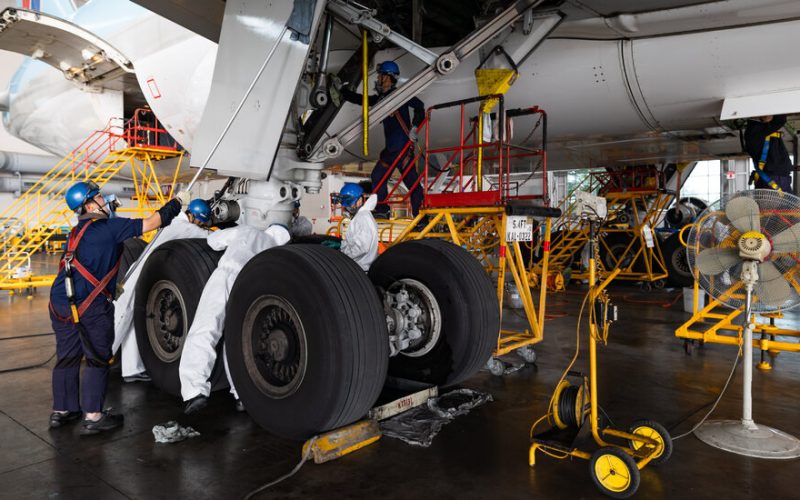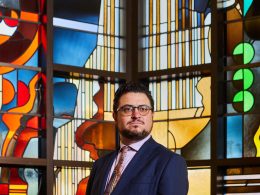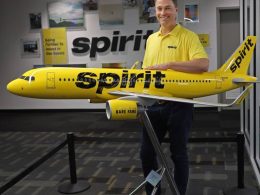A Jeju Air crash in South Korea last week, the deadliest plane accident in years, has stunned the global aviation industry. The country is regarded as a model for how to turn poor air safety practices into some of the world’s best.
Three decades ago, South Korea had a dismal record of air safety. Its flagship airline, Korean Air, experienced several deadly crashes in the 1980s and 1990s. In 2001, the U.S. Federal Aviation Administration downgraded South Korea’s air safety rating for failing to meet international standards.
Around the turn of the century, South Korea began an immense project to overhaul its aviation safety practices, drawing on the experiences of other countries including the United States. By 2008, South Korea had earned one of the world’s highest scores in a safety audit conducted by the International Civil Aviation Organization. At the time of the crash, it was considered one of the safest countries for flying.
Air safety experts cautioned that it was premature to speculate about what caused the crash on Dec. 29 of Jeju Air Flight 7C2216, in which 179 of the 181 people on board died. It was Jeju Air’s first fatal crash in its two-decade history, and the worst ever on South Korean soil. Jeju Air has said it is “fully cooperating” with investigations into the cause.
With an extensive multinational investigation underway, the experts noted South Korea’s experience in successfully upgrading its safety practices, and said the authorities might ultimately be able to draw similar lessons from the Jeju Air disaster.
“Over the past few decades, Korea and its airlines and government authorities have done very well in terms of implementing safety management systems,” said Hassan Shahidi, president of the Flight Safety Foundation, a nonprofit that provides safety guidance to the aviation industry.
In trying to determine what caused the Dec. 29 crash, officials have said they would look into multiple factors, including damage to the plane from a possible bird strike. The plane had descended without its wing flaps and landing gear activated and skidded down the runway at a faster-than-normal speed.
But another key subject of scrutiny is a concrete structure at the end of the runway that the airliner slammed into before exploding in a fireball. Aviation safety experts said the collision with the barrier could have contributed to the high number of fatalities.
“The one area that we will see moving forward, after this investigation concludes, is really: What about the airports?” Dr. Shahidi said. “This comes into question given the issue with respect to the concrete wall at the end of the runway,” he said.
Aviation safety experts said the concrete barrier, built to house the so-called localizer antenna, which is used to help pilots maintain the correct airport approach, probably made the crash at Muan International Airport more deadly.
The space around a runway, known as the runway safety area, is intended to provide unobstructed space for aircraft that may overshoot, undershoot or veer off a runway during landing.
In the United States, the F.A.A. specifies that runway safety areas at most large airports should extend 1,000 feet beyond the runway’s end and 500 feet on the sides. The International Civil Aviation Organization, a United Nations agency that sets global safety standards, recommends a standard buffer zone of about 180 to 300 meters (591 to 984 feet) from the end of the runway and ones on the sides at least twice the width of the runway.
Any structures within these zones should be “frangible,” meaning they must be able to break or give way to minimize damage in the event of a crash. At Muan Airport, the hard, concrete structure, surrounded by a mound of dirt, sits approximately 250 meters, or 820 feet, from the runway’s end, according to local officials.
The cause of the crash will probably be found to have been “very complicated and unique,” Dr. Shahidi said. “But runway overruns do happen,” he said. “That’s exactly why the end-of-runway safety area is so critical.”
Immediately after the crash, officials in South Korea said the barrier near the runway met safety regulations. But in the days following, they added that they would examine whether the placement and structure of the concrete-enforced mound should be altered.
A series of deadly Korean Air crashes more than two decades ago helped spur South Korea to reassess its aviation safety protocols and rebuild with much higher standards.
One of the worst accidents was in 1997, when a Korean Air flight crashed on the Pacific island of Guam, killing more than 200 passengers and crew members. The crash was later determined to have been caused by pilot error among other factors.
In response, Korean Air began new efforts to improve its safety record. It brought in specialists from Delta Air Lines and Boeing to help revamp training and other practices. Korean Air also invited the Flight Safety Foundation, based in Virginia, to take a look at its operations.
Korean Air said in a statement that “it is dedicated to upholding the highest safety standards.”
Around the time the F.A.A. downgraded South Korea’s safety rating in 2001, the country joined the member council of the International Civil Aviation Organization.
South Korea worked to move its domestic operations closer in line with some 10,000 of the international group’s standards and recommended practices, said Sangdo Kim, a former South Korean ambassador to the agency and deputy minister for civil aviation.
By 2008, South Korea received one of the highest scores of any country in an aviation organization safety audit, and through today, Mr. Kim said, the country’s regulators and airlines “continue to handle daily aviation operations very safely.”
Still, Mr. Kim said he sees room for improvement. The authorities aim to apply a balanced level of government oversight across all of South Korea’s more than a dozen airports, regardless of size, but in practice it is often tough to do at smaller airports like Muan, he added.
The role of the concrete barrier near the runway in last week’s catastrophe remains unclear, Mr. Kim said, but “if we find out that this was a significant factor in the disaster, we must improve the relevant regulations.”
Mr. Kim said he hoped that the crash would again prompt aviation overseers inside and outside South Korea to advance improvements in air safety. At all airports, he said, “it is a constant battle to eliminate any, even seemingly minor, safety risks.”








